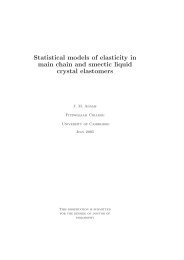Zephyr: A High Altitude Long Endurance Unmanned Air Vehicle ...
Zephyr: A High Altitude Long Endurance Unmanned Air Vehicle ...
Zephyr: A High Altitude Long Endurance Unmanned Air Vehicle ...
- No tags were found...
You also want an ePaper? Increase the reach of your titles
YUMPU automatically turns print PDFs into web optimized ePapers that Google loves.
5.2.1 Aerial PhotographyThe most common type of remote sensing is aerial photography; taking photographsof the earth. UAVs have an advantage over satellites as they can be sent as often as isneeded to any area, compared to a satellite that can only take imagery when it isorbiting above that particular spot. <strong>Zephyr</strong> will be mostly used for aerial photographyas this has so many practical applications.Aerial photography can be used to create a map of land, for example OrdinanceSurvey who display the contours of the land as well as roads on their maps. GoogleEarth also display aerial photography, but some of its data is out of date as some ofthe images were taken a few years ago. By using a UAV, recent images could beproduced for a fraction of the cost and in a much quicker time and more accuratelythan the satellites they currently use. Aerial photography can also be used to takedetailed pictures of cities in order to decide where it is possible to build new houses orto monitor their expansion.By using UAVs and aerial photography it is possible to monitor environmentalproblems. It would be possible to take regular pictures of the ice caps to see the rate atwhich they are melting, as well as taking images of the rainforest to monitor itsdepletion. On a national scale it would be possible to take detailed images of thecoastline to see the erosion of land and what towns are at risk.On top of the physical and human applications, aerial photography can be used duringnatural disasters. They can take imagery of areas that have been hit by an earthquake59
















